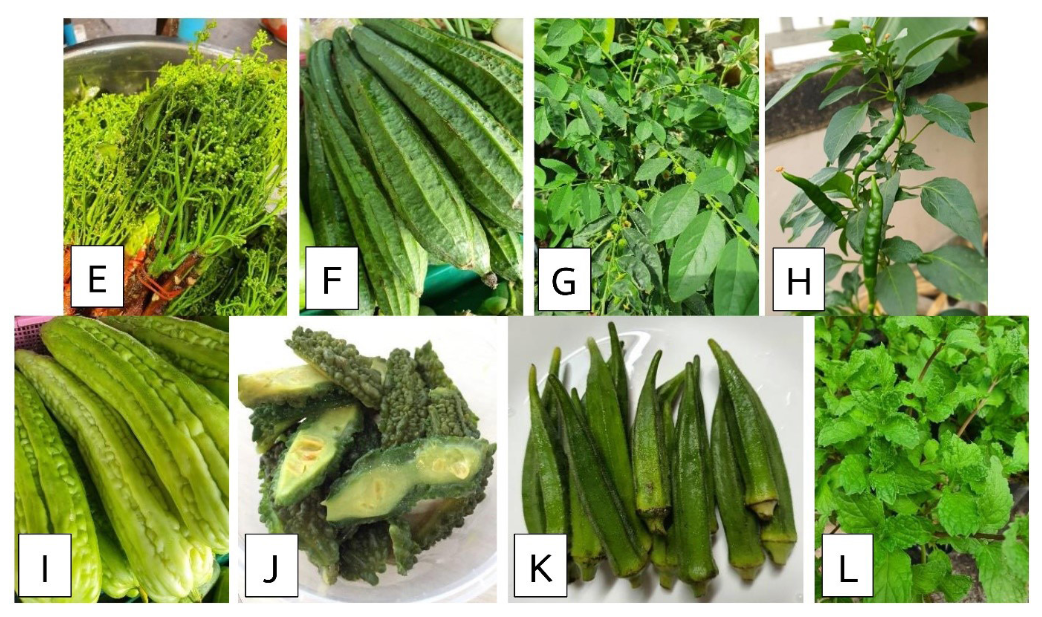Management of Diabetic Patients with Thai Traditional Medicine
Main Article Content
Abstract
Type 2 diabetes is one of the most common chronic diseases. It is an important public health issue because of the steady increase in the number of patients with diabetes. The main factors are inappropriate consumption behaviours and improper self-care that are preventable. Thai traditional medicine (TTM) is the knowledge that can be used to relieve the symptoms of diabetes. This article presents the management of diabetes patients using TTM. This article explains the cause of diabetes from Tri-dhātu imbalance leading to abnormal body elements. TTM uses herbal medicines, maneuvers and advice including having a wide range of food with different flavours, especially herbs or vegetables to help maintaining the health and balance of body elements in diabetic patients. This article presents a case report of diabetic patient who used Maturameha in combination with Western medicine. The outcome of the management was satisfactory and without any adverse drug reactions. Moreover, we also discussed the evidence-based medicine approach and the use of Moringa oleifera Lam. in diabetic patients as a guideline for providing herbal-based information to these patients. In addition, information on the treatment of diabetes by Western medicine, which consists of both pharmacological and nonpharmacological treatments. This article also provides considerations for the appropriate implementation of herbal medicine in the management of diabetic patients, as well as cautions for some maneuvers due to numbness from peripheral neuropathy. In conclusion, diabetic care with TTM applies the principle of balancing the elements using herbal medicine and various procedures, such as massage, herbal compress, herbal steam, and behavioral modification according to Dhammanamai principle. These principles will help to relieve symptoms, control blood sugar levels and reduce complications in diabetic patients, which will lead to the improved quality of life.
Article Details

This work is licensed under a Creative Commons Attribution-NonCommercial-NoDerivatives 4.0 International License.
References
สำนักงานราชบัณฑิตยสภา. พจนานุกรม ฉบับราชบัณฑิตยสถาน พ.ศ. 2554 [อินเทอร์เน็ต]. 2564 [เข้าถึงเมื่อ 17 พ.ค.2565]. เข้าถึงได้จาก: https://dictionary.orst.go.th/index.php
พระครูวินัยธรชาติชาย สมาจาโร. พุทธวิธีดูแลตนเองของผู้ป่วยโรคเบาหวาน. วารสารวิจยวิชาการ. 2561; 1(3):87.
จันทบุรีนฤนาถ, พระเจ้าบรมวงศ์เธอ กรมพระ. ปทานุกรมบาลี ไทย อังกฤษ สันสกฤต. กรุงเทพฯ : มหามกุฎราชวิทยาลัย; 2528.
พระยาพิศณุประสาทเวช. เวชศึกษา แพทย์ศาสตร์สังเขป เล่ม 1. กรุงเทพฯ: สามัคคี, 2529.
ขุนนิทเทส สุขกิจ. แพทย์ศาสตร์นิทเทศ. พิมพ์ครั้งที่ 4. กรุงเทพฯ : พร้อมจักรการพิมพ์; 2516. น. 186.
สุ่ม วรกิจ พิศาล. เวชสาตร์วัณ์ณณา เล่ม 5. กรุงเทพฯ: พิศาลบรรณนิติ์. 2470. น. 841.
สุรเกียรติ อาชานานุภาพ. ตำราการตรวจรักษาโรคทั่วไป 280 โรค. กรุงเทพฯ: หมอชาวบ้าน; 2544. น. 474-475.
โรงเรียนอายุรเวทธำรงสถานการแพทย์แผนไทยประยุกต์ คณะแพทยศาสตร์ศิริราชพยาบาล มหาวิทยาลัยมหิดล. การแพทย์แผนไทยในคณะแพทยศาสตร์ศิริราชพยาบาล. กรุงเทพฯ: ศุภวนิชการพิมพ์; 2552.
มูลนิธิฟื้นฟูการแพทย์ไทยเดิมฯ และโรงเรียนอายุรเวทธำรง สถานการแพทย์แผนไทยประยุกต์คณะแพทยศาสตร์ศิริราชพยาบาล มหาวิทยาลัยมหิดล. ตำราการแพทย์ไทยเดิม (แพทย์ศาสตร์สงเคราะห์ ฉบับอนุรักษ์เล่ม 1). กรุงเทพฯ: ศุภวนิชการพิมพ์; 2550
สถานการแพทย์แผนไทยประยุกต์ คณะแพทยศาสตร์ศิริราชพยาบาล มหาวิทยาลัยมหิดล. การแพทย์แผนไทยประยุกต์กับการพัฒนาการแพทย์แผนไทยให้ยั่งยืน 2554. กรุงเทพฯ: ศุภวนิชการพิมพ์; 2554.
มูลนิธิฟื้นฟูส่งเสริมการแพทย์แผนไทยเดิมฯ โรงเรียนอายุรเวท (ชีวโกมารภัจจ์). ตำราเภสัชกรรมไทย. พิมพ์ครั้งแรก. กรุงเทพฯ: พิฆเณศพริ้นท์ติ้ง เซ็นเตอร์; 2548.
โรงเรียนอายุรเวทธำรง สถานการแพทย์แผนไทยประยุกต์ คณะแพทยศาสตร์ศิริราชพยาบาล มหาวิทยาลัยมหิดล. การแพทย์แผนไทยในคณะแพทยศาสตร์ศิริราชพยาบาล. หัตถเวชกรรมแผนไทย (การนวดไทยแบบราชสำนัก) ตอนที่ 1: การนวดพื้นฐาน. กรุงเทพฯ: ศุภวนิชการพิมพ์; 2557.
เพ็ญนภา ทรัพย์เจริญ, กัญจนา ดีวิเศษ,กัณฑ์วีร์ วิวัฒน์พาณิชย์, บรรณาธิการ. คุณค่าและสรรพคุณทางยาของผักพื้นบ้าน. พื้นบ้านและอาหารพื้นบ้าน 4 ภาค; 15-16 พฤษภาคม 2542; ณ ห้องประชุมไพจิตร ปวะบุตร ชั้น 9 ตึกสำนักงานปลัดกระทรวงสาธารณสุข สถาบันการแพทย์แผนไทย กรมการแพทย์. กรุงเทพฯ: กระทรวงสาธารณสุข; 2542.
สุขุม พิริยะพรพิพัฒน์, พาณี วสนาท. การศึกษาประสิทธิผลและความปลอดภัยของตำรับยามธุรเมหะกับ Metformin ในผู้ป่วยเบาหวานชนิดที่ 2 รายใหม่. วารสารการแพทย์แผนไทยและการแพทย์ทางเลือก. 2563;18(3):478-495.
Wang F, Bao Y, Zhang C, Zhan L, Khan W, Siddiqua S, et al. Bioactive components and anti-diabetic properties of Moringa oleifera Lam. Critical Reviews in Food Science and Nutrition. 2020:1-25.
Anthanont P, Lumlerdkij N, Akarasereenont P, Vannasaeng S, Sriwijitkamol A. Moringa Oleifera Leaf Increases Insulin Secretion after Single Dose Administration: A Preliminary Study in Healthy Subjects. J Med Assoc Thai. 2016;99(3):308-13.
Taweerutchana R, Lumlerdkij N, Vannasaeng S, Akarasereenont P, Sriwijitkamol A. Effect of Moringa oleifera leaf capsules on glycemic control in therapy-naive type 2 diabetes patients: A randomized placebo-controlled study. Evidence-Based Complementary and Alternative Medicine. 2017;2017:6581390.
กรมการแพทย์แผนไทยและการแพทย์ทางเลือก กองทุนภูมิปัญญาการแพทย์แผนไทย. ประมวลสรรพคุณสมุนไพรไทย , พิมพ์ครั้งที่ 2. กรุงเทพฯ: สำนักงานกิจการโรงพิมพ์ องค์การสงเคราะห์ทหารผ่านศึก; 2558.198,213
อัครินทร์ นิมมานนิตย์. เวชศาสตร์เชิงประจักษ์กับการพัฒนางานการแพทย์แผนไทย. ใน: ทวี เลาหพันธ์, เอื้อพงศ์ จตุรธำรง, บรรณาธิการ. หนังสือการแพทย์แผนไทยประยุกต์กับการพัฒนาการแพทย์แผนไทยให้ยั่งยืน 2555. กรุงเทพฯ: ศุภวนิชการพิมพ์; 2555.11-16.
Lumlerdkij N, Mamak C, Duangdamrong J, Phayakkhawisai T, Trakoolsilp B, Jamparngernthaweesri K, et al. Evaluation of Evidence Related to Medical Uses and Health Claims of Fingerroot. Siriraj Medical Bulletin. 2021;14(2):61-72.
American Diabetes Association Professional Practice C, American Diabetes Association Professional Practice C, Draznin B, Aroda VR, Bakris G, Benson G, et al. 4. Comprehensive Medical Evaluation and Assessment of Comorbidities: Standards of Medical Care in Diabetes-2022. Diabetes Care. 2022;45(Suppl 1):S46-S59.
American Diabetes Association Professional Practice C, American Diabetes Association Professional Practice C, Draznin B, Aroda VR, Bakris G, Benson G, et al. 9. Pharmacologic Approaches to Glycemic Treatment: Standards of Medical Care in Diabetes-2022. Diabetes Care. 2022;45(Suppl 1):S125-S43.
มูลนิธิฟื้นฟูส่งเสริมการแพทย์ไทยเดิมฯ และโรงเรียนอายุรเวทธำรง สถานการแพทย์แผนไทยประยุกต์ คณะแพทยศาสตร์ศิริราชพยาบาล มหาวิทยาลัยมหิดล. หัตถเวชกรรมแผนไทย (การนวดไทยแบบราชสำนัก) การนวดพื้นฐาน. พิมพ์ครั้งที่ 2. กรุงเทพฯ: ศุภวนิชการพิมพ์; 2554
Al-Rowais NA. Herbal medicine in the treatment of diabetes mellitus. Saudi medical journal. 2002;23(11):1327-31.
Bush TM, Rayburn KS, Holloway SW, Sanchez-Yamamoto DS, Allen BL, Lam T, So BK, Tran DH, Greyher ER, Kantor S, Roth LW. Adverse interactions between herbal and dietary substances and prescription medications: a clinical survey. Alternative therapies in health and medicine. 2007;13(2):30-5.
Chatchawan U, Jarasrungsichol K, Yamauchi J. Immediate effects of self-thai foot massage on skin blood flow, skin temperature, and range of motion of the foot and ankle in type 2 diabetic patients. The Journal of Alternative and Complementary Medicine. 2020;26(6):491-500.
Chatchawan U, Eungpinichpong W, Plandee P, Yamauchi J. Effects of thai foot massage on balance performance in diabetic patients with peripheral neuropathy: a randomized parallel-controlled trial. Medical science monitor basic research. 2015;21:68.






